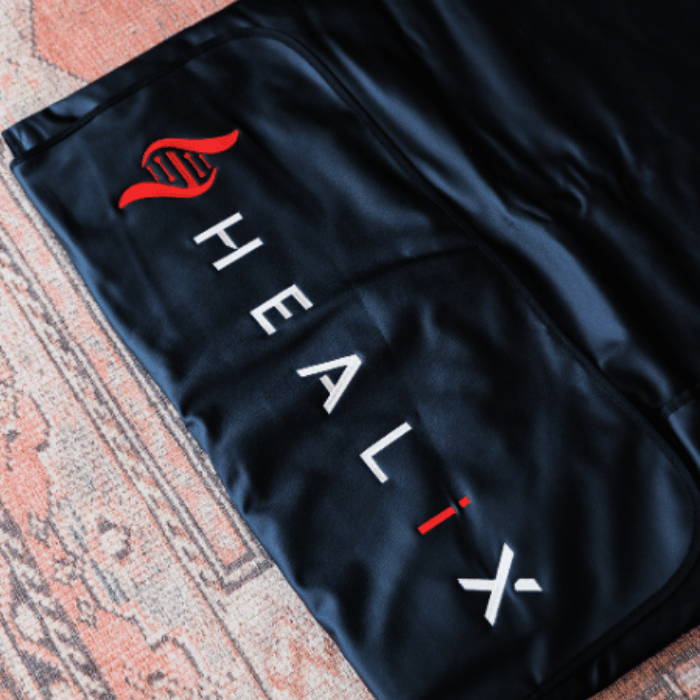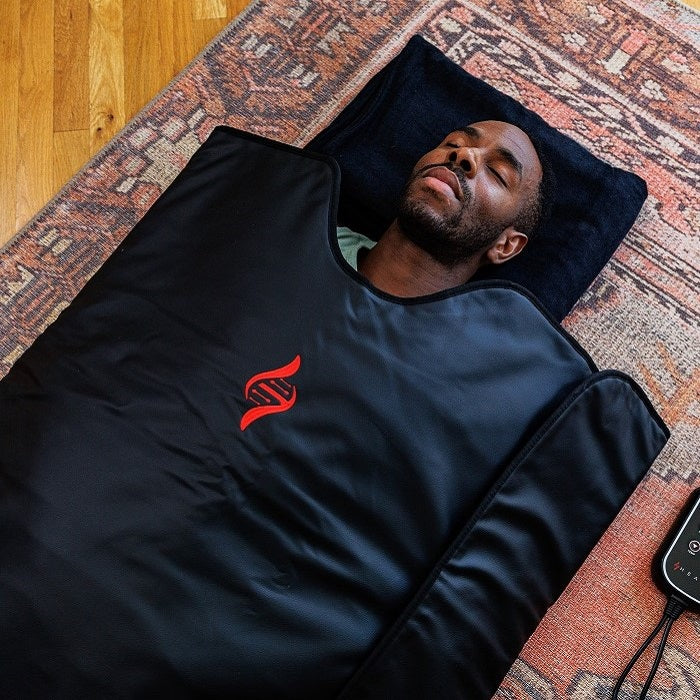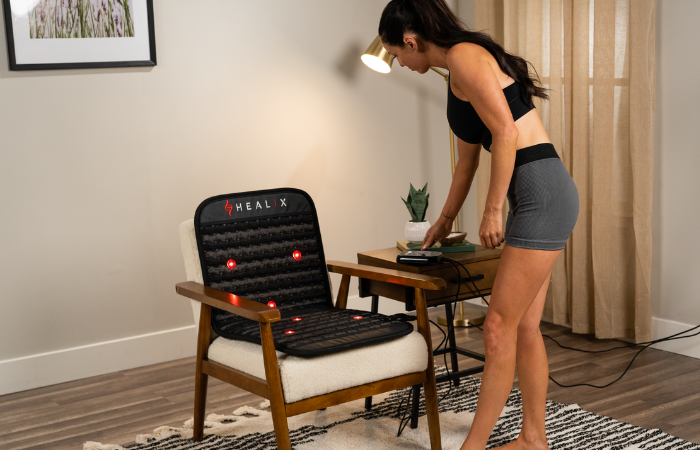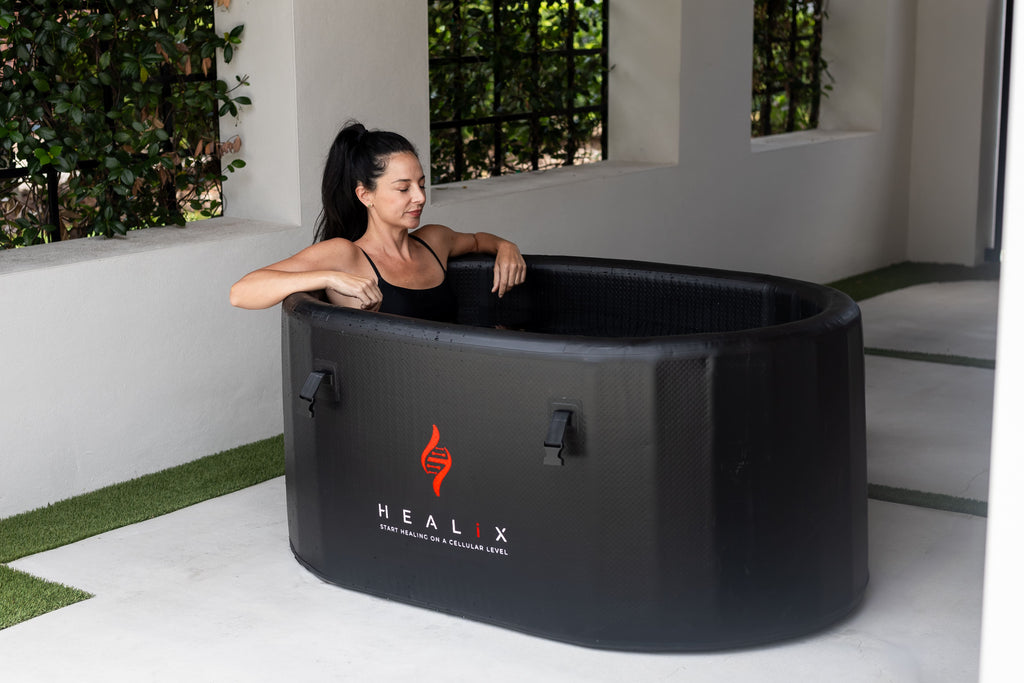Healing Your Body Naturally: Infrared Therapy for Inflammation Reduction
Healing Your Body Naturally: Infrared Therapy for Inflammation Reduction

August 22nd, 2025 | Infrared Tech
Inflammation is a natural response of the body to injury, infection, or stress. While acute inflammation is essential for healing, chronic inflammation can lead to a host of health issues, including arthritis, cardiovascular disease, and autoimmune disorders. For those seeking natural ways to reduce inflammation and promote healing, far infrared therapy has emerged as a promising solution.
This non-invasive treatment harnesses the power of light and heat to modulate inflammatory responses, improve cellular function, and support overall wellness. Let’s explore how far infrared therapy works, its scientifically-backed benefits, and why it’s becoming a go-to for managing inflammation naturally.
What Is Far Infrared Therapy?
Far infrared (FIR) therapy uses invisible light waves to penetrate deep into the skin and tissues, delivering gentle heat directly to the body. Unlike traditional saunas that heat the air around you, FIR therapy warms your body from within, creating a soothing and therapeutic experience. This makes it an excellent tool for reducing inflammation, improving circulation, and promoting natural healing processes.
If you’re curious about how heat therapy supports overall wellness, check out our detailed guide: Heat Therapy: Natural Remedies for Stress and Anxiety .
How Far Infrared Therapy Reduces Inflammation
1. Modulating Cytokine Production
Cytokines are signaling molecules that regulate inflammation in the body. Excessive production of pro-inflammatory cytokines, such as interleukin-6 (IL-6) and tumor necrosis factor-alpha (TNF-α), contributes to chronic inflammation. Studies have shown that far infrared therapy reduces levels of these inflammatory markers by modulating cytokine expression. This process helps restore balance to the immune system and alleviates chronic inflammation. According to research on photobiomodulation, red and near-infrared light influence cellular processes by affecting cytokine production, which can reduce inflammatory responses and promote healing¹.
For a deeper dive into how inflammation impacts the body, explore our blog:
Understanding the Anti-Inflammatory Benefits of Heat Therapy.

2. Activating Mitochondrial Pathways
Mitochondria, often referred to as the "powerhouses of the cell," play a critical role in energy production and cellular repair. Far infrared therapy activates mitochondrial pathways by enhancing the production of adenosine triphosphate (ATP), a molecule essential for cellular function. Photobiomodulation research highlights that red and near-infrared light stimulate mitochondrial activity, which not only boosts energy production but also reduces oxidative stress—a key contributor to inflammation¹.
To learn more about how mitochondrial health impacts recovery, read our article:
Recovery, Mitochondria, and Red Light Therapy: A Deep Dive into Cellular Health.
3. Stimulating Heat-Sensitive Ion Channels
Heat-sensitive ion channels, such as transient receptor potential vanilloid 1 (TRPV1), are activated by the gentle warmth of far infrared therapy. These channels play a key role in pain perception and inflammation modulation. By stimulating TRPV1, FIR therapy reduces inflammatory responses and promotes healing. Research shows that heat-induced effects, such as passive heating through saunas or far-infrared radiation, can trigger acute increases in inflammatory markers followed by longer-term reductions—mimicking some benefits of exercise for those unable to be physically active².
4. Enhancing Circulation and Oxygen Delivery
Poor circulation can exacerbate inflammation by limiting oxygen and nutrient delivery to affected areas. Far infrared therapy improves blood flow by dilating blood vessels and enhancing oxygen delivery to tissues. Enhanced circulation reduces inflammatory markers and accelerates tissue repair, providing relief from pain and swelling.
Discover how improved circulation can boost recovery in our blog:
Win Big By Increasing Circulation And Blood Oxygen.
Applications of Far Infrared Therapy for Inflammation
1. Wound Healing
Far infrared therapy is particularly effective for promoting wound healing, especially in chronic or infected wounds. The combination of improved circulation, reduced inflammation, and enhanced tissue regeneration accelerates the healing process. Research highlights that infrared and photothermal therapies are promising options for individuals recovering from surgical procedures or managing chronic wounds³.
To understand how heat therapy aids in detoxification and healing, check out our article:
Harnessing the Power of Far Infrared Therapy for Detoxification and Wellness.
2. Musculoskeletal Pain
Chronic inflammation is a common cause of musculoskeletal pain, including conditions like low back pain and arthritis. Far infrared therapy reduces inflammation in affected joints and muscles, providing pain relief and improving function. Clinical studies have shown that heat therapy is effective for pain relief and functional improvement in conditions like low back pain⁴.
Learn more about how infrared therapy can aid muscle recovery in our blog:
Post-Workout Recovery: Accelerating Healing with Infrared Therapy.
3. Cardiovascular Health
Inflammation plays a significant role in the development of cardiovascular diseases. By reducing systemic inflammation, far infrared therapy supports heart health and lowers the risk of adverse cardiovascular outcomes. Passive heat therapies like FIR saunas reduce blood pressure and improve arterial compliance, further contributing to cardiovascular wellness.
For insights into how heat therapy supports lymphatic health, explore our blog: Key to Great Wellness: Strengthening Your Lymphatic System.
Why Choose Far Infrared Therapy Over Other Methods?
Allopathic treatments for inflammation, often come with side effects and may not address the root cause of the problem. In contrast, far infrared therapy offers a natural, drug-free solution that targets inflammation at the cellular level. Its non-invasive nature and ability to enhance overall well-being make it an ideal choice for individuals seeking holistic healing. Most studies report good tolerability, although optimal treatment parameters and long-term effects need further research⁵.
Tips for Maximizing Your Far Infrared Therapy Experience
To get the most out of your sessions, consider these practical tips:
1. Stay hydrated before, during, and after treatment to support detoxification and prevent dehydration - This includes a diet rich in electrolytes.
2. Start with shorter sessions (10–15 minutes) and gradually increase duration as your body adjusts.
3. Use FIR therapy consistently—regular use yields cumulative benefits for inflammation reduction and overall health.
4. Pair FIR therapy with mindfulness practices like meditation or deep breathing to amplify relaxation.
If you’re looking for ways to combine mindfulness with heat therapy, check out our blog:
Meditation Can Lower Cortisol and Promote Positive Health Changes.
Conclusion
Far infrared therapy offers a safe, effective, and natural way to reduce inflammation and promote healing. By modulating cytokine production, activating mitochondrial pathways, and enhancing circulation, FIR therapy addresses the root causes of inflammation while supporting overall wellness. Whether you’re managing chronic pain, recovering from an injury, or simply seeking to improve your health, far infrared therapy has something to offer everyone.
For further reading, explore these related articles:
1. Top 10 Benefits of Infrared Sauna Blankets (Everything You Need to Know)
2. Managing Tendonitis in Athletes Through Infrared Red Light Therapy
References
1. Yadav, A., & Gupta, A. Noninvasive red and near‐infrared wavelength‐induced photobiomodulation: promoting impaired cutaneous wound healing. Photodermatology. 2017; 33. https://doi.org/10.1111/phpp.12282
2. Chang, Y. The effect of far infrared radiation therapy on inflammation regulation in lipopolysaccharide-induced peritonitis in mice. SAGE Open Medicine. 2018; 6. https://doi.org/10.1177/2050312118798941.
3. He, L., Di, D., Chu, X., Liu, X., Wang, Z., Lu, J., Wang, S., & Zhao, Q. Photothermal antibacterial materials to promote wound healing.. Journal of controlled release: official journal of the Controlled Release Society. 2023 https://doi.org/10.1016/j.jconrel.2023.09.035.
4. Trubalski, M., Łuba, Z., Żerebiec, M., Bzoma, M., & Niezbecka-Zając, J. Harnessing the heat: a comprehensive review of heat therapy's role in managing lumbar pain.. Wiadomosci lekarskie. 2025; 78 3. https://doi.org/10.36740/WLek/202481.
5. Trbovich, M., Hoekstra, S., Wu, Y., Uhlig-Reche, H., Leicht, C., & Kellogg, D. Passive heat therapy to improve cardiometabolic health in persons with a spinal cord injury — a pilot study. Physiology. 2024 https://doi.org/10.1152/physiol.2024.39.s1.1118.



